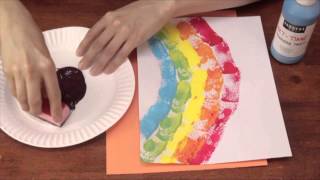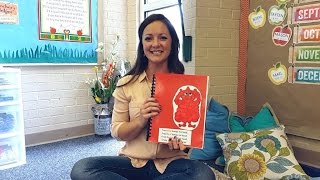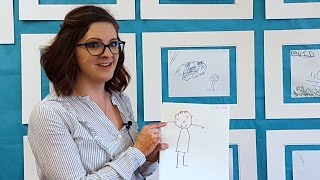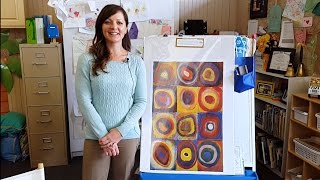Bethany Keefer | CityArts | Wichita, Kansas
A visual arts lesson that teaches the students an ancient Japanese art style. The teacher begins by relating this art form as a cultural expression and asks the students if they see examples of cultural express at their own life. Using shaving cream, watercolor, and paper the student participates in a sensory activity that allows them to explore color through sight and touch.
Read Transcript
Hi. My name is Bethany Keefer. I work with City Arts as a Youth Instructor. We Partnered with Trees for Life about sharing art lessons that we do with youth students. This is meant for children ages four to really to adults enjoy this project. Suminagashi is what we are going to learn about today. Suminagashi is an ancient Japanese art from that was about marbling color, doing transfers with floating ink on water onto paper. Now we have changed that a little bit by using watercolor. We use watercolor and then shaving cream. So, I’m going to walk you through how to do this today. First off, a good way for teachers to relate this to students is to talk about their culture. What kinds of traditions that they may have used or grown up with as far as their culture goes. I know I have a Syrian background and through our heritage, ornate tapestries done through fiber art and weaving is a tradition that we have learned. So, I’m going to go ahead and continue with the project but, if the students don’t know about their heritage please encourage them to talk to relatives to find that out, it’s a good way to relate that back to the project. Here are some examples of Suminagashi after it is dried. This is kind of, the end product, we would like to have, it’s a great project because there’s no right or wrong way to do it, and I feel like students really enjoy it whether, or not they have had practice in it. So, materials that we’ll need for this project is shaving cream, watercolor, watercolor brush, we’re going to actually use the end of that, paper towels. A tray, for us to do the work on to help contain the mess. Paper for us to do our transfers on, it doesn’t matter what kind of paper, you can use computer paper, or thicker watercolor paper and, also some kind of scraper to scrape the excess off, you could use a thick cardboard to do that as well. All right so, we’re going to start by putting some shaving cream down on the tray, don’t need a lot, and then I’m going to mix that up with my hand. Teachers you want to help the students get the shaving cream out on the tray, but encourage them to use their hands as a sensory activity to get that moved around. You can use a paper towel to clean off the excess mess. Then we’re going to select a watercolor, and help the students with this, they only need a few drops. I’m going to choose a different color. I’ll do blue, and I would encourage the students to try a few different colors. I’m going to do purple. Okay next, you’re going to take your watercolor brush, we’re going to use the end of this, and use this kind of like a mixing tool. And, we just move it around, you want to cross through as many lines as you can. You’re going to see, it’s going to start to make a pattern. Once you feel like you like the picture that you have, you can go ahead and take a piece of paper, and place that down. Lightly pat it, and then pick it up, as easily as you can. This is what it’s going to look like. We’ll take our scraper and scrape the excess off. Look at what a cool picture that makes. Look at that pretty marbling it does. The wonderful thing with this is you can just keep reusing it, use many different pieces of paper to make different products. I think the kids will really enjoy it. That’s it for today’s lesson.






